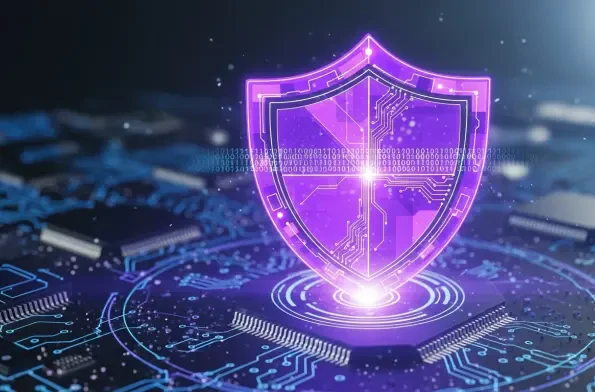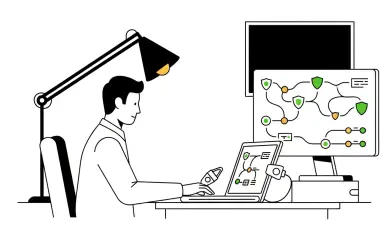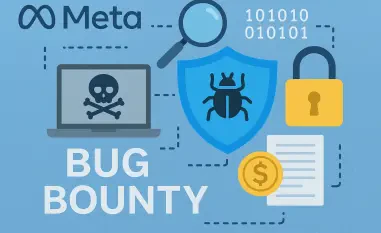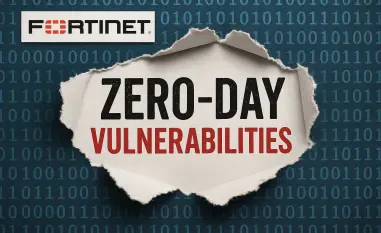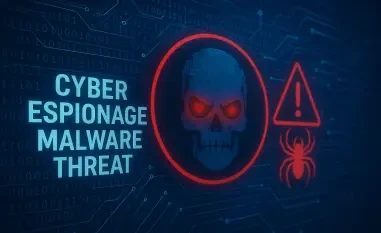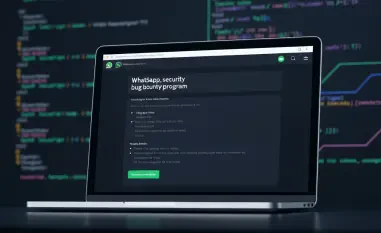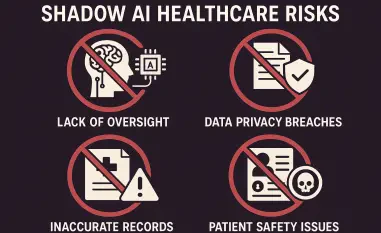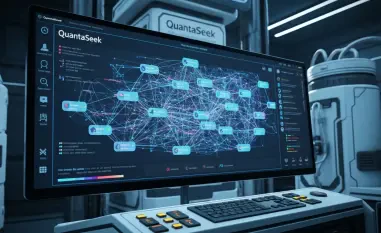Setting the Stage for a Critical Cybersecurity Concern
In an era where digital tools underpin nearly every facet of personal and professional life, the security of widely used software like file archivers has become a cornerstone of cybersecurity. Imagine a scenario where a seemingly harmless ZIP file, downloaded for a routine task, becomes a gateway for attackers to seize control of an entire system. This is not a distant threat but a present reality with the discovery of high-severity vulnerabilities in 7-Zip, a popular open-source file compression tool relied upon by millions globally. These flaws, which could enable remote code execution, underscore a pressing challenge in the software industry: balancing functionality with robust security.
The current state of the cybersecurity landscape reveals an alarming trend of increasing attacks on common utilities, where even trusted tools can be weaponized if not properly safeguarded. As organizations and individuals grapple with evolving threats, the recent findings in 7-Zip serve as a stark reminder of the importance of vigilance and timely updates. This report delves into the specifics of these vulnerabilities, their potential impact, and the broader implications for the industry, aiming to equip stakeholders with the knowledge needed to mitigate risks.
Understanding the 7-Zip Vulnerabilities
Nature of the Security Flaws
At the heart of this issue are two critical vulnerabilities, identified as CVE-2025-11001 and CVE-2025-11002, affecting all versions of 7-Zip prior to 25.00. These flaws stem from improper handling of symbolic links within ZIP archives, a mechanism that can be exploited through directory traversal techniques. Essentially, a maliciously crafted archive can trick the software into placing files outside the designated extraction directory, potentially into sensitive system locations.
This oversight opens the door to remote arbitrary code execution, where attackers can embed harmful scripts or executables in critical areas of a system. Such a breach could compromise the integrity of the affected device without the user’s immediate knowledge. The simplicity of crafting such an archive heightens the danger, as it does not require advanced technical skills to exploit.
The technical root lies in how 7-Zip processes symbolic links during decompression, failing to enforce strict boundary checks. This gap in validation is what allows attackers to manipulate file paths, turning a routine unzip operation into a potential security disaster. Addressing this flaw requires not just a patch but a reevaluation of how file-handling mechanisms are implemented in compression tools.
Impact and Severity
The severity of these vulnerabilities is reflected in their CVSS 3.0 score of 7.0, placing them in the high-risk category due to their potential to undermine confidentiality, integrity, and availability of systems. While exploitation depends on user interaction—specifically, the act of opening a malicious archive—this requirement does not diminish the threat level. Many users may unknowingly engage with such files, especially if disguised as legitimate content.
The widespread adoption of 7-Zip across diverse environments, from personal desktops to enterprise servers, amplifies the risk. Differences in how the software is implemented or configured can create varied attack vectors, making uniform protection challenging. A successful exploit could grant attackers privileges equivalent to those of the user or service account running the application, paving the way for deeper system infiltration.
Beyond immediate compromise, the long-term implications include erosion of trust in open-source tools if such issues persist unaddressed. The high severity rating serves as a call to action for both developers and users to prioritize security over convenience. This situation highlights how even non-critical software can become a linchpin in broader cybersecurity defenses.
Risks of Exploitation
Potential Consequences
Should these vulnerabilities be exploited, the consequences could be catastrophic, ranging from full system compromise to unauthorized data access. Attackers could deploy malware, including ransomware, locking users out of their own systems while demanding payment for restoration. Such outcomes disrupt operations and inflict significant financial and reputational damage.
Data theft represents another grave concern, as sensitive information could be extracted and misused for fraud or espionage. The ability of attackers to execute arbitrary code means they can install backdoors, enabling persistent access for future malicious activities. This scenario is particularly troubling for organizations handling confidential client or proprietary data.
Moreover, the privileges gained through exploitation mirror those of the compromised user or service account, meaning an attacker could potentially escalate their control over a network. This cascading effect could turn a single breach into a widespread incident, affecting multiple systems or users. The ripple effects of such an event underscore the urgency of addressing these flaws promptly.
Scope of Affected Systems
Given 7-Zip’s extensive user base, spanning individual consumers to large enterprises, the attack surface is alarmingly vast. From personal laptops used for casual file sharing to automated systems in corporate environments, the software’s presence is ubiquitous. This broad reach means that a single vulnerability can impact millions of devices worldwide.
Variations in how 7-Zip is deployed—whether as a standalone application or integrated into other software—create diverse points of entry for attackers. Some systems may run older versions lacking security updates, while others might operate under elevated privileges, increasing the stakes of a breach. This inconsistency complicates efforts to gauge the full extent of exposure.
The urgency for both individual users and organizations to evaluate their systems cannot be overstated. Assessing whether outdated versions are in use and understanding the context of their deployment are critical steps in mitigating risk. Proactive monitoring and inventory management are essential to narrow down potential vulnerabilities in this sprawling landscape.
Challenges in Addressing Software Vulnerabilities
Detection and Mitigation Difficulties
Identifying and resolving security flaws in widely used open-source tools like 7-Zip presents unique hurdles for the industry. Unlike proprietary software with dedicated support teams, open-source projects often rely on community-driven efforts, which can delay the detection of obscure bugs. This decentralized model, while innovative, sometimes lacks the resources for comprehensive vulnerability scanning.
Mitigation is further complicated by the nature of exploitation, which hinges on user interaction. Crafting defenses against such conditional threats requires anticipating human behavior, a notoriously unpredictable factor. Security teams must balance technical fixes with user education, a dual approach that demands time and coordination across multiple stakeholders.
Additionally, the sheer volume of users and environments where 7-Zip operates makes uniform patch deployment a logistical challenge. Ensuring that updates reach every corner of the user base, especially in regions with limited internet access or awareness, remains a persistent obstacle. This fragmented landscape calls for innovative distribution strategies to close security gaps effectively.
User Dependency and Safe Practices
The reliance on user action for exploitation introduces a layer of complexity in designing proactive defenses. Many individuals may not recognize the risks associated with opening unfamiliar archives, particularly if they appear to come from trusted sources. This gap in awareness can undermine even the most robust technical safeguards put in place by developers.
Educating users on safe file-handling practices is paramount, yet it faces resistance due to varying levels of technical literacy. Campaigns to promote caution—such as verifying file sources or avoiding unsolicited downloads—must be tailored to diverse audiences. Bridging this knowledge divide is essential to reduce the likelihood of successful attacks stemming from these vulnerabilities.
Beyond individual responsibility, organizations must integrate security training into their operational frameworks. Encouraging a culture of skepticism toward unverified content can serve as a first line of defense against social engineering tactics often paired with technical exploits. Strengthening this human firewall is as critical as patching the software itself.
Importance of Timely Updates and Patching
Availability of Fixes
A resolution to these pressing vulnerabilities arrived with the release of 7-Zip version 25.00, specifically engineered to address the identified flaws. This update rectifies the improper handling of symbolic links, ensuring that files cannot be extracted beyond intended directories. Developers have prioritized this fix to prevent directory traversal exploits that could lead to code execution.
Users are strongly advised to upgrade their installations immediately to this latest version to eliminate the associated risks. Delaying this action leaves systems exposed to potential attacks, especially in environments where malicious archives could be introduced through email attachments or downloads. The update process is straightforward, designed to minimize disruption for end users.
The swift response from the development team reflects a commitment to user safety, setting a precedent for how open-source projects can handle critical security issues. However, the effectiveness of this solution depends on widespread adoption. Ensuring that the update reaches all affected systems remains a shared responsibility between developers and the user community.
Responsible Disclosure Timeline
The discovery and disclosure of these vulnerabilities followed a responsible path, initiated by security researcher Ryota Shiga on May 2 of this year. This early notification allowed for coordinated efforts to develop a patch before public exposure of the flaws. Such collaboration between researchers and developers is vital to minimize the window of opportunity for malicious actors.
A public advisory was issued on October 7 of this year, providing detailed guidance on the nature of the vulnerabilities and the available fix. This transparency ensures that users are informed of the risks and the necessary steps to protect their systems. It also fosters trust in the open-source ecosystem by demonstrating accountability in addressing security concerns.
The timeline of disclosure highlights the importance of structured communication in cybersecurity. By balancing the need for confidentiality during patch development with the urgency of public awareness, the process serves as a model for handling similar issues in other software. This approach helps maintain stability in the broader digital environment.
Broader Cybersecurity Implications
Rising Threats to Common Utilities
The exploitation of vulnerabilities in tools like 7-Zip points to a growing trend of attackers targeting everyday software utilities. File archivers, browsers, and other foundational applications are increasingly viewed as entry points for broader system breaches. This shift in focus reflects a strategic pivot by cybercriminals toward leveraging trusted tools for maximum impact.
Such attacks exploit the inherent trust users place in familiar software, often bypassing skepticism that might accompany less reputable sources. The industry must adapt by integrating stricter security protocols into the development of even the most mundane applications. Overlooking these components can create cascading vulnerabilities across interconnected systems.
Looking ahead, the trend suggests a need for continuous monitoring and threat intelligence sharing within the cybersecurity community. Collaborative efforts to identify and neutralize risks in common tools will be crucial over the next few years, from this year to 2027. Staying ahead of adversaries requires a proactive stance that anticipates rather than reacts to emerging threats.
Strengthening Defenses Moving Forward
Enhancing security in software development begins with embedding rigorous testing and validation processes into every stage of the lifecycle. For open-source projects like 7-Zip, this means fostering community involvement in code reviews and audits to catch potential flaws early. A collective approach can bolster defenses against sophisticated exploits.
Equally important is the role of user awareness in fortifying cybersecurity. Initiatives to educate the public on recognizing phishing attempts and verifying file authenticity can significantly reduce the success rate of attacks reliant on human error. Empowering users with knowledge transforms them into active participants in safeguarding digital spaces.
The future of cybersecurity hinges on a dual focus: improving coding standards to prevent vulnerabilities and cultivating a security-conscious culture among users. By aligning technical advancements with behavioral changes, the industry can build a more resilient framework against threats. This holistic strategy is essential to adapt to an ever-evolving landscape of digital risks.
Reflecting on Findings and Next Steps
Looking back, the identification of critical vulnerabilities in 7-Zip served as a wake-up call for the cybersecurity community, highlighting how even widely trusted tools could harbor significant risks. The high-severity flaws, capable of enabling remote code execution, exposed the fragility of systems when user interaction intersected with technical oversights. The rapid response in releasing version 25.00 demonstrated the power of coordinated action between researchers and developers to mitigate immediate dangers.
Moving forward, the emphasis must shift toward preemptive measures that address vulnerabilities before they can be exploited. Organizations should prioritize automated update mechanisms to ensure timely patch deployment across their networks, reducing reliance on manual user intervention. Additionally, investing in advanced threat detection tools can help identify malicious archives before they reach end users, adding a crucial layer of protection.
A final consideration is the cultivation of partnerships across the industry to share insights and resources in combating shared threats. Establishing forums for real-time collaboration on emerging risks can accelerate response times and enhance collective resilience. By focusing on these actionable steps, the cybersecurity field can transform challenges like the 7-Zip vulnerabilities into opportunities for building a safer digital future.
